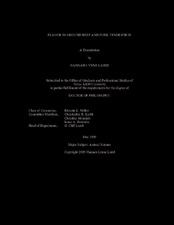| dc.description.abstract | The restaurant industry has been trying to produce a better hamburger utilizing different formulations and grind treatments to affect flavor and texture attributes in ground beef patties. With each hamburger chain claiming their hamburger is the best because of a premium type of meat or processing characteristic they use, this research will help determine the legitimacy of their marketing claims by understanding how different meat sources, grind methods, form methods, patty thickness, cooking methods, and holding temperatures affect the flavor, texture, and consumer perception of the final hamburger. Hamburger production and consumption in America is a huge industry and all processing measures impact the flavor and texture of ground beef patties. From this study, the positive and negative flavor and texture attributes of different ground beef patty processing were found. In the second study, 16 treatments were utilized, including four meat sources, two fat percentages, and two grind treatments to better understand consumer attitudes and preferences of ground beef in a home use test. Consumers were recruited from 4 cities and given ground beef samples in chubs and patty forms. In this home-use study, when consumers prepared the meat themselves, they preferred patties or chubs that were 10% fat, chuck or sirloin meat source, and traditionally ground to 6.4 mm plate size. Consumer research has consistently shown that traditionally consumers overcook pork creating a subpar eating experience. Understanding the relationship between loin color, cut thickness, cooking method, water-holding capacity and tenderness from chops and roasts cooked to 62.8°C is crucial. Pork boneless chops, blade chops, bone-in chops, tenderloin roast and boneless roasts from both National Pork Board color score 2 and 4.
The chops and roasts were then cooked to 62.8°C either by baking, grilling, pan frying, or pan-sautéing. Cooking method and chop thickness affected (P < 0.05) cook yield and cook time. Baking took the longest cooking time, pan-sauté had the greatest yield (P < 0.05) and grilling had the most (P < 0.05) cook loss. Thickness had minimal effect. Although the baking method had the longest cooking time, it produced the most (P < 0.05) tender bone-in and boneless chops. Overall, this study revealed that color, cooking method, and thickness impacted drip loss, cook yield, cook time, cooked color, and tenderness on blade, boneless, and bone-in chops, tenderloins, and roasts. | en |


